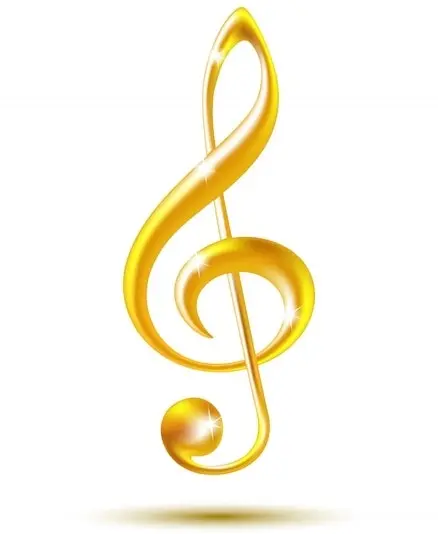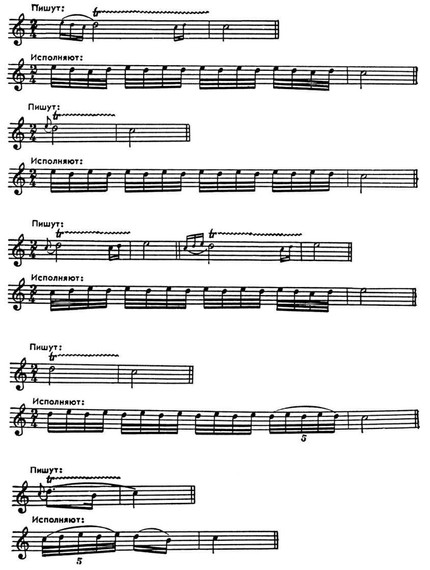
Trill |
ital. trillo, from trillare – to rattle; French trile; German Triller; English shake, trill
Type of melisms; melodic decoration, consisting of 2 rapidly alternating sounds, the main and upper auxiliary, located at a distance of a tone or semitone from the main sound. The duration of the trill is equal to the duration of the main sound. There are different execution forms T.: starting from the lower or upper auxiliary. sound and from the main sound (the most common form in the 20th century); the ending of T. is simple, without concluding. figures or with the help of auxiliary. sound, so-called. nakhshlag (German: Nachschlag), which is written in small notes at the end of T. On short sounds, T. can only be performed in the form of a double mordent or groupetto. In a dotted rhythm, T. cannot take the entire time of the main. sound, because it is necessary to preserve the nature of this rhythmic. drawing.

In virtuoso music. plays often found so-called. a moving T. or a trill chain (Italian catena di trilli; French chaone de trilles; German Trillerkette; English continuous trill), consisting of an ascending or descending sequence of T., connected with or without nakhshlags.
V. A. Vakhromeev



